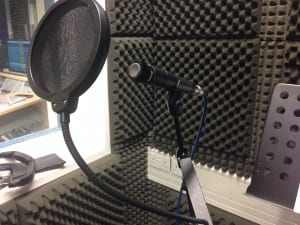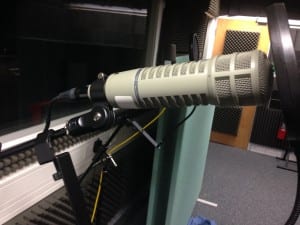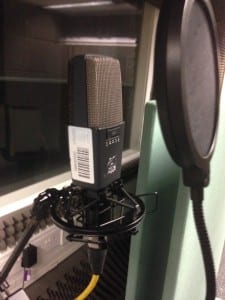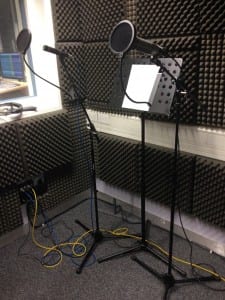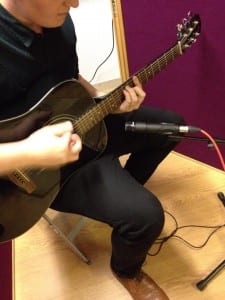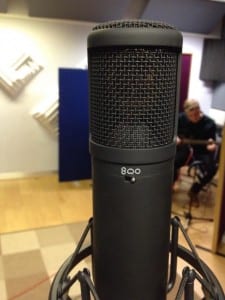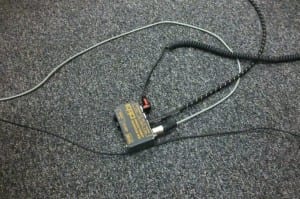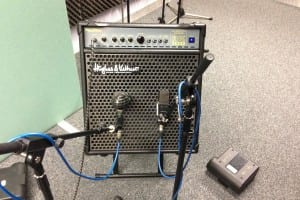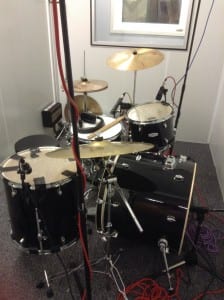This week we worked on the vocal part for our track. When recording vocals, microphone selection is crucial as certain microphones work better with different vocal styles than others. For this reason we selected three microphones to compare to see which gave us the best sound. The three microphones were set up on individual stands with a pop shield placed in front of each. Having set up the headphone mix in the dead room we got the vocalist to sing in each microphone and from the monitor mix in the control room we judged each microphones sound. The three microphones we used were…
Shure SM57 – A versatile dynamic microphone with a cardioid polar patter; ideal for snare drums, guiar cabs and for vocals. Boosted frequency response around 6/7KHz ideal for vocals. Strong proximity effect when the vocalist is close to the mic.
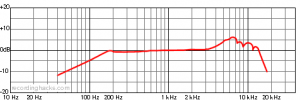
Electro-Voice RE20 – A large diaphragm dynamic microphone with a cardioid polar pattern, usually used as a broadcast mic or on a kick drum. Relatively flat frequency response. Little proximity effect. Optional High Pass Filter switch (-2.25dB/oct at 400Hz).
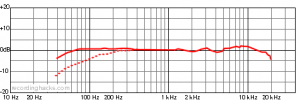
AKG C141 – A large diaphragm, mulit-patern condenser microphone with five different polar patterns (Omnidirectional, Cardioid, Wide Cardioid, Hyper Cardioid and Figure of Eight). Ideal for recording most instruments and situations due to it’s switchable features. Relatively flat frequency response when set to the Cardioid polar pattern. Little proximity effect. Optional pad switch with three settings (-6dB, -12dB and -18dB) and a High Pass Filter switch with three options (-12 dB/octave at 40 Hz, -12 dB/octave at 80 Hz and -6dB/octave at 160 Hz).
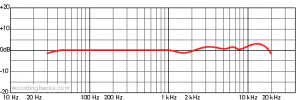
When we listened back to the three microphones we soon found out that each microphone changed the sound of the vocals in different ways. The Shure SM57 offered clarity however there was a lot of sibilance on the ‘S’ sounds. The AKG C414 set to the cardioid polar pattern and with the high pass filter on (-6dB/octave at 160 Hz) had a good sound however it was more dry than the others, picking up more plosive and breath sounds. The Electro-Voice RE20 with the high pass filter on (-2.25dB/oct at 400Hz) had a smooth, clear sound that was ideal for both the vocalist and the track.
Once we all had decided that the EV RE20 was the best mic to use, we positioned the vocalist in the dead room ready to record. During the sound check we decided to that the sound was a bit bass heavy so we added a low end shelf on the EQ on the desk around 100Hz.
We recorded the track all the way through, listened back to it and re-recorded the parts that we went happy using the playlist feature on ProTools. Using markers to mark points was useful in distinguishing the different parts of the song and parts we wanted to re-record.
Microphone List and Channel Guide
Ch. 1 – Vocals 1: Shure SM57
Ch. 2 – Vocals 2: Electro-Voice RE20
Ch. 3 – Vocals 3: AKG C414
